
Travel
16:02, 24-Jan-2019
Cool tech helping reduce Spring Festival travel rush
Updated
11:38, 25-Jan-2019
CGTN
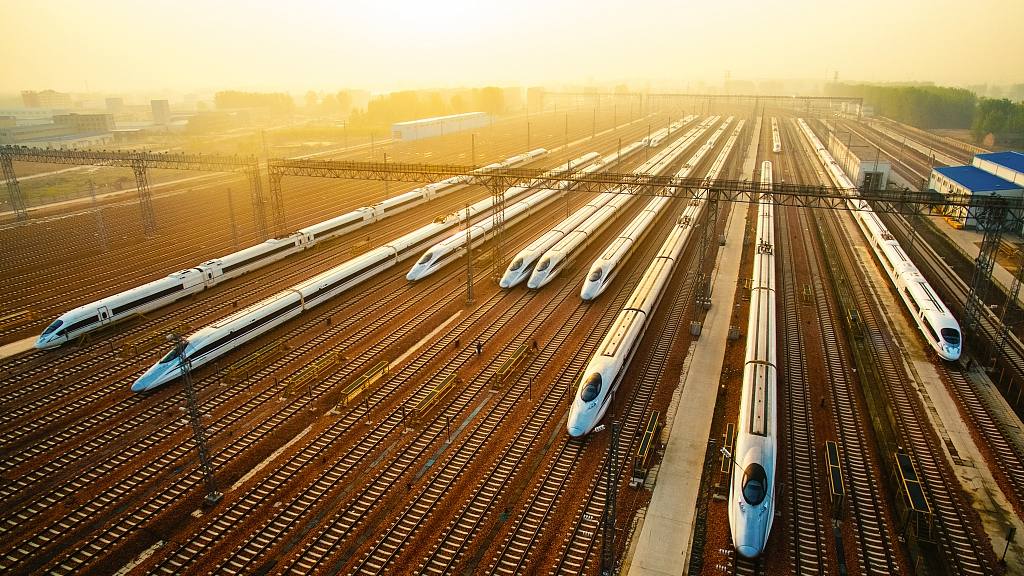
Spring Festival, or the Lunar New Year, is China's most important holiday for family reunions. At the same time, the world's largest annual human migration – the Spring Festival Travel Rush – kicked off this Monday, with nearly 3 billion trips expected to be made in the 40 days from January 21 to March 1.
Millions of people working or studying out of their hometowns will be hurrying home to reunite with families as the Lunar New Year approaches, which falls on February 5 this year. This long-held tradition is the main reason for the travel rush. The other is that this is a two-week holiday every year, which is a perfect time to travel for many people.
During the travel rush, all of the transportation departments, especially the railway system, are facing an extremely high traffic load. This year, new technologies were introduced to increase efficiency during the rush and helping ease the bottlenecks of transportation.
Guangdong Province, south China
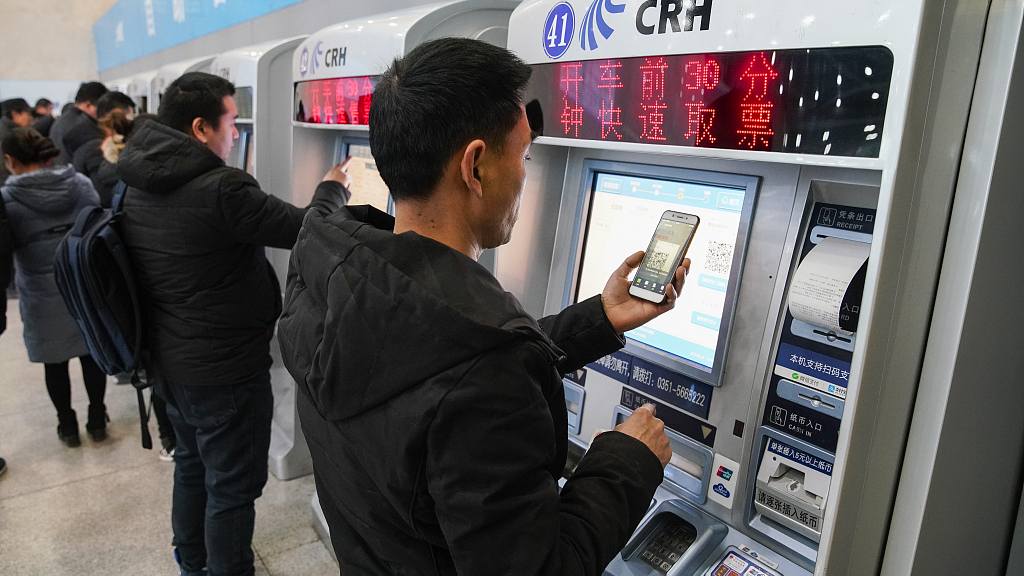
Passengers scanning QR code to purchase tickets. / VCG Photo
Passengers scanning QR code to purchase tickets. / VCG Photo
Starting Monday, passengers can simply swipe their phones to board the intercity high-speed railway connecting the provincial capital of Guangzhou with the nearby city of Shenzhen. Passengers can register to pay for travel via Alipay, the newly online payment platform in China, and are issued QR codes valid for three hours. It only takes a few minutes to operate on the mobile phones and this new payment method reduces crowding in front of ticket booths. The proportion of online and mobile tickets purchase is expected to reach 80 percent respectively.
Shanghai, east China
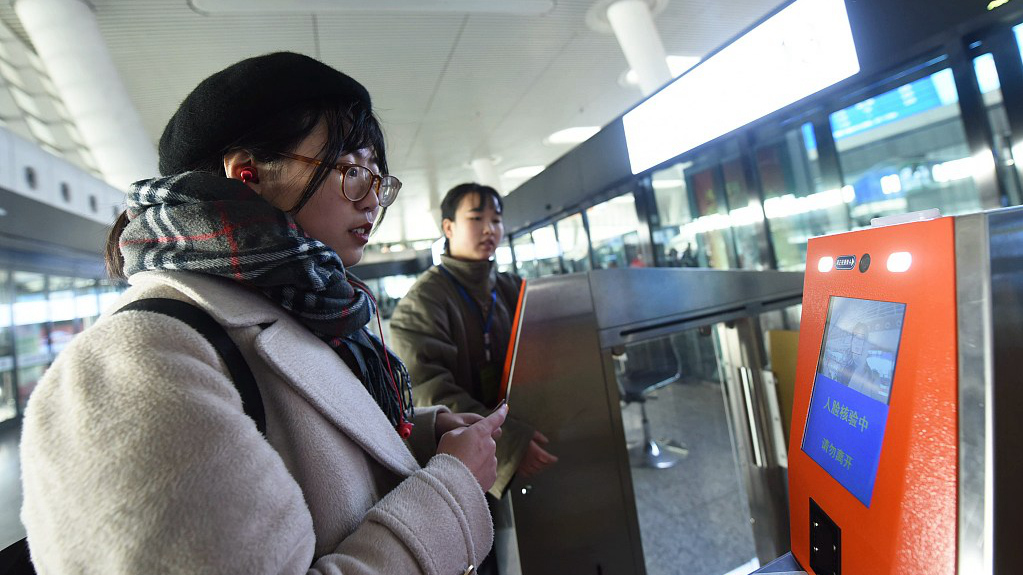
Passengers using facial recognition to check in. /VCG Photo
Passengers using facial recognition to check in. /VCG Photo
The city's two airports are expected to handle about 13.25 million passenger trips in total. Other than that, in Shanghai as well as Jiangsu, Zhejiang and Anhui provinces, 464 ticket checking machines in railway and bus terminals allow swift passage using facial recognition technology, at railway stations that have pioneered ticketless travel.
Gansu Province, northwest China
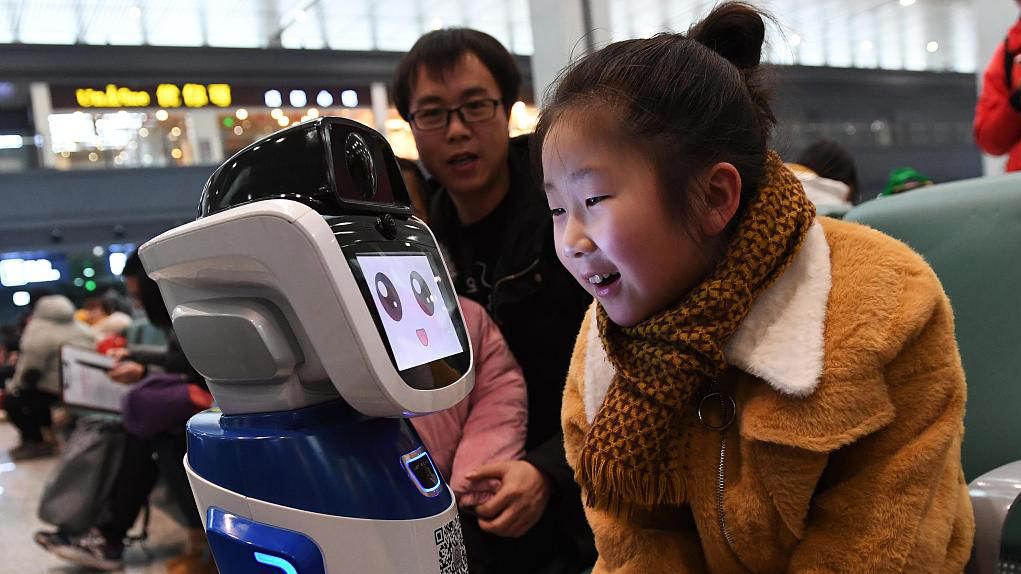
Child passenger getting information from robot Xiaolu. /VCG Photo
Child passenger getting information from robot Xiaolu. /VCG Photo
In the bustling railway station of Lanzhou, the cute robots attract the attention of passengers.
"No worries. We can report the loss for you. Please go to window 15 of the ticket gates on the second floor.”
"Hello, the water room is behind the 8A and 8B ticket gates, and behind the 26A and 26B ticket gates. Have a nice trip!"
This AI robot Xiaolu has been launched by many railway stations around the country this year, working as an information service in railway stations. This powerful cool tech can interact with passengers based on key words such as "lost and found," "renewal tickets," and "bathroom," greatly reducing the pressure on station staff.
Jiangxi Province, east China
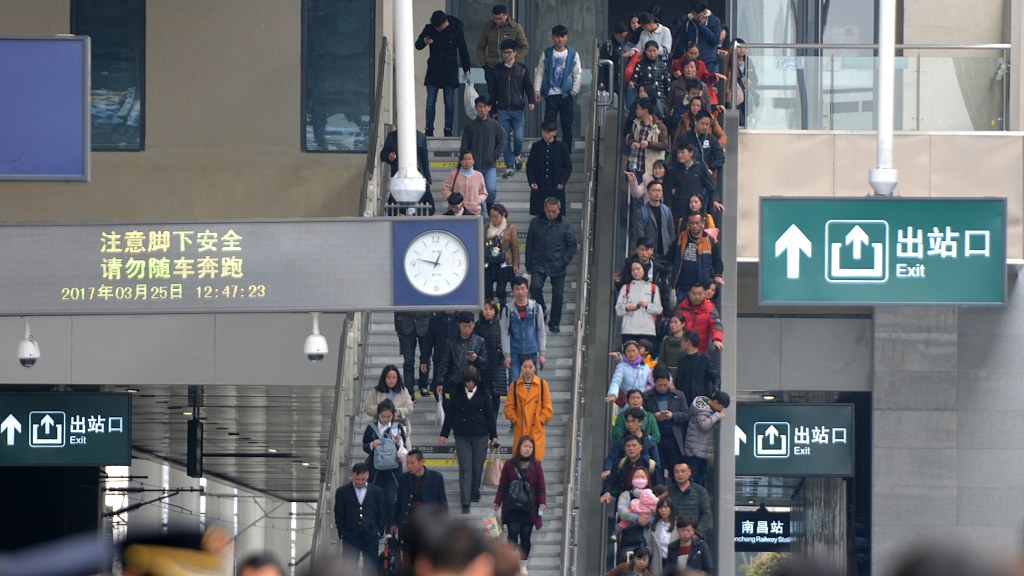
Nanchang Railway Station /VCG Photo
Nanchang Railway Station /VCG Photo
At Nanchang railway station, the VR navigation system was launched during the Spring Festival travel. It provides a 360-degree panoramic view of the station to guide passengers, making their trip more convenient. Subscribing to the official WeChat account of the Nanchang railway station allows passengers to experience security checks, ticket checks and locate the train gates in advance, getting familiar with the station and accelerating the departure process.
For this year's Spring Festival Travel Rush, many cool technologies and new applications will make it easier for the transportation of passengers and help them find an easy way home.

SITEMAP
Copyright © 2018 CGTN. Beijing ICP prepared NO.16065310-3
Copyright © 2018 CGTN. Beijing ICP prepared NO.16065310-3